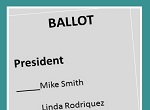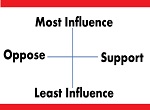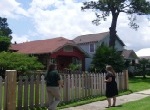Conflict Resolution in and for Neighborhood Associations
Last Updated: June 8, 2024
No matter how harmonious your beginnings, or how wonderfully you handle disagreements most of the time, sooner or later it is likely that your neighborhood association will encounter real conflict. The alternative is to wither and die because the meetings become too bland when any hint of disagreement is dismissed and ignored.
In our experience, a low-conflict neighborhood association often is situated in a relatively problem-free area or one that does not perceive its problems, so that is a possible reason for lack of conflict as well. On this page, we deal with a scenario in which there is some actual disagreement, whether it is out in the open or hovering beneath the surface.
Types of Conflict
Three types of conflict typically arise in neighborhood associations. Handled poorly, any one of these could split you apart.
First, often neighborhood conflict spills over into the neighborhood association. In fact, I am trying hard but I can't remember a time when a neighborhood association I worked with was immune to picking up on a generalized neighborhood conflict.
If this happens to you, factions may develop within your organization and cause enough hard feelings that people don't want to participate in your activities, at least for the duration of the broader debate. Alternatively, if the neighborhood organization is aligned behind one position, and strong people or groups within the community take an opposing view, this causes stress in your association and might focus it unproductively on winning an argument instead of addressing real problems. Either way, major neighborhood conflict can present a challenge.
Second, conflict may develop due to different styles
within the organization. Examples would
be the older folks want traditional meetings and paper newsletters, while the
younger residents want the organization to exist primarily or only through social media and digital communication. Old timers in the organization want to keep
the traditional logo, historic meeting place, and same parties, while
the newer residents have a different style, want what they perceive to be
higher quality graphics, think all communication should run on social media, like to socialize at trendy restaurants instead of the
church basement, and so forth.
Third, conflict may develop because of so-called personality conflicts between key leaders in your organization. I find that fairly often personality conflicts are really work style conflicts. Either way, sometimes these will be so strong that you begin to develop the Judith faction and the Michael faction, not really based on issues or even work styles, but just based on who people like more.
How to Approach Conflict in Neighborhood Associations

Resolving any of these conflicts enough that they do not sap the energy of neighborhood associations requires effort on the part of the board, president, or a strong leader or elder statesman. Helpful approaches include:
- First and foremost, cultivate the will of the members of the association to stick together. Emphasize your common history, the previous storms you have weathered together, and the positive accomplishments of your group.
- Meet directly with the major participants in the squabble, one at a time. To be most effective, these one-on-one meetings are either conducted by the board, a small committee within the board, or that one strong individual within the neighborhood that almost everyone respects. Purposes of the meetings are to plead for toning down the rhetoric and the anger, to better understand positions and issues, and to insist that the conflict will not be allowed to dominate the agenda of the neighborhood association.
- If necessary, ask leaders to step aside if they themselves are major parties to the conflict. You might think that will not work, but a right-minded leader will do what is best for the neighborhood and the organization. If you happen to find yourselves with a leader who puts ego before altruism, it isn't a bad time to find that out.
- If it seems feasible, have an open and honest dialogue with time limits on how much each person can speak. For this approach to work, you must have a thoughtful and calm moderator, sit people in a circle, pick a time of the day or the week when people are least likely to be rushed or distracted, and pick a place that is private, quiet, and neutral on the contested matters.
- If both or all sides maintain good will, but cannot reach an accommodation, you could work with whatever community-minded, non-profit mediation services may be available in your community. For mediation to work for neighborhood associations, both parties need to agree to enter into mediation. Trained mediators can sometimes develop the will to trust the process, though, so don't give up too easily on this option.
- When conflicts appear to be based on disagreement about real issues, find programs and speakers that will shed light on the subject. Usually you won't change the minds of the factional leaders, but those who are on the fence may prevail with common sense if they feel better informed about the issue that is dividing you.
- When you are dealing with a conflict that can be traced back to an ineffective committee or chairperson, just quietly de-commission that committee or select a new chair by enticing the previous chair to accept some other assignment. Just a couple of weeks ago, we advised a neighborhood association president to appoint a "task force" with a slightly different charge from that of a committee that had become dysfunctional, while allowing the conflict-accentuating committee to fade away. Just start recognizing the new task force and conveniently forget to ask for a report from a discontinued committee, if your board can't handle a greater degree of frankness.
- You didn't expect us to say this, but maybe you should ignore it and it will go away. In fact, in a strong neighborhood association, just let the disagreement play out as long as people still agree on basic principles and can disagree without becoming disagreeable. Just don't select this option if there are personal threats, or if the conflict dominates a second or third or tenth meeting without plenty of warm fuzzy sentiments being expressed to counteract the divide.
When things really blow up, your neighborhood association might want to consult with a local conflict resolution center. This is likely available to you if you are in a major city or university town. This could be especially evaluable if your association is engaged in an external fight, such as with a developer or a major slum landlord. If you are loggerheads internally, you could try this method of conflict resolution as well.
In really extreme cases, look for a paid mediator. In my experience, this is only relevant when some substantial money is involved. However, it was helpful in a case in which a board member also was the landlord.
Learn More Ideas That May Help Deal with Conflict
- Making and Keeping a Good Community >
- Community Organizations > Neighborhood Association Conflict Resolution
Join GOOD COMMUNITY PLUS, which provides you monthly with short features or tips about timely topics for neighborhoods, towns and cities, community organizations, and rural or small town environments. Unsubscribe any time. Give it a try.




